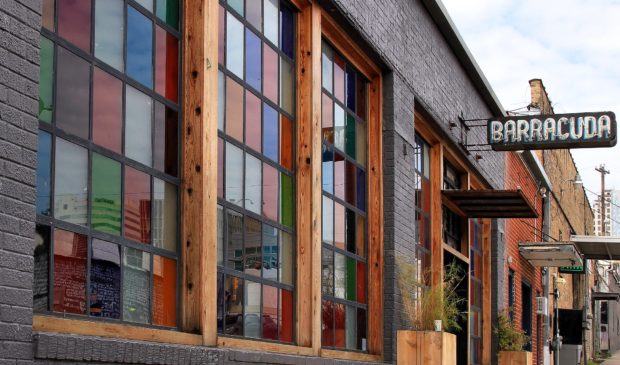Red River district pushes city to commit $35M to purchase venue properties
Wednesday, May 13, 2020 by
Chad Swiatecki Leaders from the cluster of live music venues along Red River Street have asked the city to dedicate $35 million to purchase venue properties in the area, as part of a larger menu of programs and spending to preserve those businesses in the face of prolonged closures due to the Covid-19 pandemic.
On Tuesday the Red River Cultural District delivered a six-page policy proposal to members of City Council asking for music venues to be considered for possible immediate relief using money from the federal Coronavirus Aid, Relief and Economic Security (CARES) Act. Other recommendations included streamlined permitting for music venues, completion of long-planned streetscape improvements and improved services for the large homeless population located near the district.
The proposal comes as city staffers are assembling an initial framework for how best to use the $170.8 million the city has available from the CARES Act, which directs recipient governments to use the funds for a combination of emergency response, public health and economic recovery needs.
In asking for immediate assistance for venues, the proposal notes that the 54 primary music venues as defined by the local Music Venue Alliance average about $40,000 in non-staff overhead each month. That means without extensive private sector resources it will cost $2 million per month to keep those businesses afloat until they are able to reopen, which industry and public health leaders estimate may not be possible until late fall at the soonest.
“Right now everyone is holding their breath underwater … that’s what’s been happening for the past 30 days and moving into 60 days with no income and bills to pay,” said Cody Cowan, executive director of the Red River Cultural District. “We’re crossing a threshold in the next 60 to 90 days where holding your breath underwater isn’t going to work for these small businesses. We need everything and we need it now.”
Cowan said he and others involved in the city’s live music industry have been disappointed at the lack of consideration for venue spaces to date in the recent weeks as Council and other leaders discuss pandemic recovery options. Council has approved the creation of a $1.5 million fund to provide grants to musicians impacted by the shutdown of the live music economy, and repurposed the $1 million Creative Space Assistance Program to help artists with their living expenses.
“The bottom line is we’re not part of the conversation and I don’t understand why we’re not, but we have to be at the table and be included. Right now we’re not,” he said. “We’ve had the same access to Council that we have in the past, but if you watch Council meetings and resolutions, unless I missed something critical I find no instance where the live music economy has been described or considered.”
Council Member Kathie Tovo said she is working on a resolution either for next week’s Council meeting or in early June that will ask staff to examine the feasibility of the recommendations in the Red River proposal. She said she supports having the city move to acquire venue space to prevent the cluster of venues along Red River from being displaced by rising rents and redevelopment pressures.
“One of the recommendations was to look for opportunities to purchase venues on Red River and those kinds of strategic investments are what we should give serious thought to when considering how to spend the CARES funding. We’ve got a lot to think about,” she said. “We’ve worried about the Red River Cultural District venues for a while because most of them don’t own their real estate and are always going to be subject to what happens on the real estate market. So that is one of the recommendations I find particularly interesting as we look for opportunities to make long-term investments right now.”
Rick Carney, chair of the Music Commission, said he supports recommended moves such as using the recently created Live Music Fund, which is funded with money from the city’s Hotel Occupancy Tax, to cover payroll and operating expenses for venues that employ around 2,000 people.
“This is a big package but it’s for a big problem, so in relationship to the crisis it’s a proper approach. The figures are not cheap but also the need is not small,” he said. “It’s about the culture of the city and how that culture was used to build other industries like the technology sector, and it’s also about people’s jobs.”
Read the Red River Cultural District proposal below:
Download (PDF, 132KB)
Photo made available though a Creative Commons license.
The Austin Monitor’s work is made possible by donations from the community. Though our reporting covers donors from time to time, we are careful to keep business and editorial efforts separate while maintaining transparency. A complete list of donors is available here, and our code of ethics is explained here.
You're a community leader
And we’re honored you look to us for serious, in-depth news. You know a strong community needs local and dedicated watchdog reporting. We’re here for you and that won’t change. Now will you take the powerful next step and support our nonprofit news organization?









